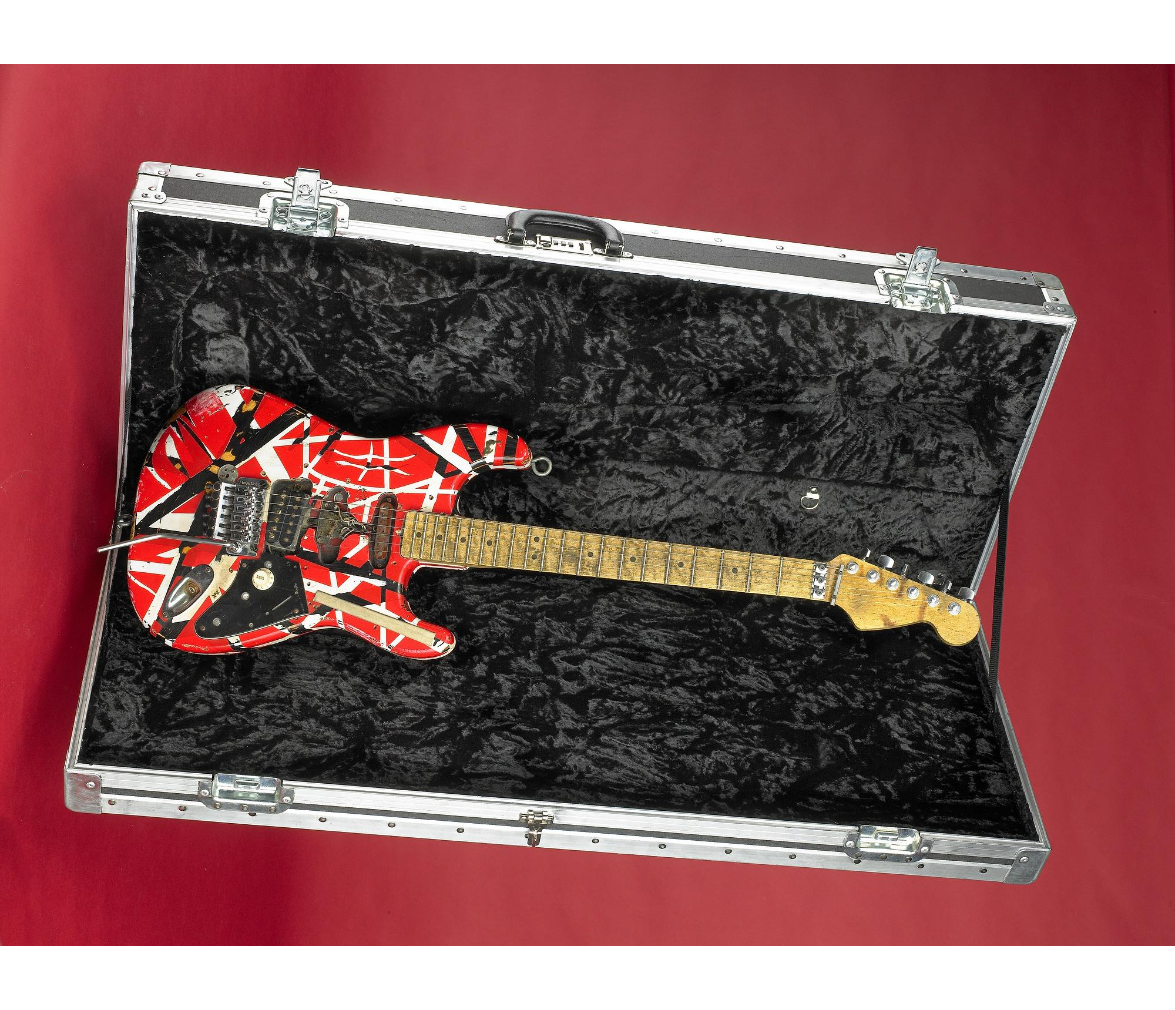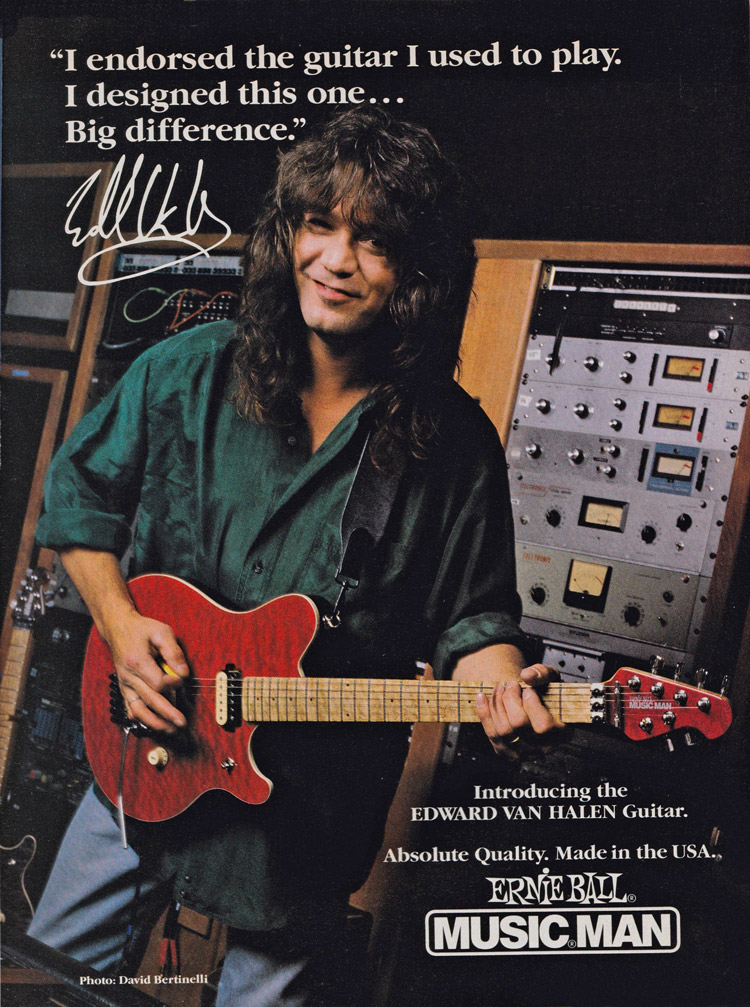Fans of Eddie Van Halen knew he'd been unwell for some time, but it was still a shock when his death at the age of 65 was announced this week. No one expects their heroes to die. Heroes are invincible, surely? Ed was a guitar hero, for sure, and he may have been one of the last of the breed.
What made Ed a guitar hero? Back in 1978, when Van Halen's first album burst onto the scene, he certainly played like one. He hammered-on, he dive-bombed with his vibrato, he pinged and squealed harmonics, he put down gorgeous rhythm support, and he deployed some breathtaking tapping techniques and dazzlingly fast picking. In lesser hands, this could all have amounted to so much noise. But Ed made this combination his own, coupling the bombast with a keen melodic feel and a taste for experimentation.
The first signal of all this was packed into the sub-two-minute "Eruption" on that first album in '78, a jaw-dropping showcase for Ed's skills that had fellow guitarists considering careers in accountancy. He rarely did the same thing twice: The band's second album, released the following year, had "Spanish Fly," another brief and equally impressive guitar spotlight—but this time played on an acoustic.
Michael Jackson's 'Beat It' brought Ed's supreme powers to a vast audience of listeners in 1982. All the trademark EVH elements were there, even if it sounded as if the engineer had pushed up a fader from a different session altogether. The solo emphasized his almost classical-sounding melodic sense and an enviable ability to frame a complete and satisfying musical statement within his allotted 16 bars. He even managed a cheeky nod to Hendrix at the close.
Ed told Denise Quan at CNN about an experience at Tower Records at the time. "I was buying something, and 'Beat It' was playing over the store sound system," he recalled. "The solo comes on, and I hear these kids in front of me going, 'Listen to this guy trying to sound like Eddie Van Halen.' I tapped him on the shoulder and said, 'That is me!' That was hilarious."
Ed's guitar playing may have produced a stream of singular creations, but his guitars, too, were definitely not off-the-rack. When he was starting out in the '70s, like most young guitarists he made do with what he could get hold of. His first electric was a Teisco, and his mates in a couple of early bands rejected his Strat as too thin-sounding and his 335 as too un-rock-sounding. Ed decided to somehow combine the two, and the most famous of his early Van Halen axes was his so-called Frankenstrat home-assembled parts guitar.

Ed put together the original Frankenstrat himself, probably by combining a Strat-style body and a neck he got from Charvel (supplied to them by Boogie Bodies), a Gibson humbucker from his 335 which he slanted at the bridge, some jumbo Gibson frets, a Strat vibrato, and a single control for volume.
Almost as important as the bits and pieces he put together to suit his developing playing style were the finishes he applied, notably the distinctive bicycle-paint striped look. Ed sprayed on one color, applied seemingly random strips of masking tape, and then sprayed another color over all that. There were various combinations on a number of guitars, including black-and-white (as seen on the cover of the first album), red-black-and-white, and yellow-and-black.
His guitars never seemed to stay the same for long, especially after he secured an endorsement deal with Kramer in 1982—an early Kramer ad suggested: "If you don't believe us, ask Edward"—which also led to his pioneering use of Floyd Rose vibratos. Another guitar seen during this period was one Ed made by matching a Kramer Pacer body with a Kramer neck that had a hockey-stick headstock like the Ibanez Destroyer he'd used a while before.
Soon it seemed as if every guitarist who played loud, aggressive rock wanted a Floyd Rose just like Eddie's and a Kramer guitar just like Eddie's. Kramer became the biggest-selling electric guitar brand in the States in the mid-'80s—although it would burn out and barely survive into the following decade.
Bill Reim, the US boss of Ibanez at the time, recalls how the '80s seemed to be nothing but Strats and superstrats. "You couldn't give a Les Paul away," Bill tells me. "At Ibanez, we were trying to develop guitars that would compete in that market—but they were pale imitations of what was being put out by some of those other companies that were heavily entrenched in the scene. Kramer was flying on the fuel of Eddie Van Halen, a one-man force to be reckoned with. During the '80s it was a Kramer world, and everybody was trying to get a piece of that action."

When Ed donated Frankenstrat 2 to the Smithsonian National Museum of American History in 2011, Beth Py-Lieberman at the Smithsonian Magazine asked him what became of Frankenstrat 1. "I retired it from regular use," he replied. "It took so much abuse from endless touring and recording—I wanted to pay some respect to it and let it survive and not let it get destroyed completely. At the same time it became something so well known beyond my wildest dreams that its value made it a target for theft, and I wanted to protect it. I still play it every now and then. It's priceless to me."
Later, Ed worked with several guitar companies to produce a sequence of signature models based on a design he called the Wolfgang, named for his son. The first sighting came in 1991 with an Ernie Ball Music Man model, followed by Peavey's version, introduced in 1996. Since 2009, the Wolfgang has been part of the line of products for Ed's own EVH brand, created in collaboration with Fender.
Jim DeCola was supervisor of guitar design engineering at Peavey in the 90s. "When the opportunity arose to design his signature model, it was a daunting task, for sure," Jim tells me. "Ed being such an icon, and having a reputation to be extremely particular about his gear, was a heavy weight and responsibility to bear. I didn’t take it lightly because I knew he didn’t either. We had a lot of good times along the way that I will always remember and cherish. I feel fortunate and very proud to have worked with Ed and to have designed the Peavey EVH Wolfgang to his satisfaction—it makes me proud to know Ed embraced the guitar for the rest of his career and the design lives on. Rest in peace, Ed!"
Mike Hickey, who played guitar with Venom and Cronos, is Joe Bonamassa's guitar tech, and he's in no doubt about the heroic aspects of Ed's guitar playing and his importance in the world of rock guitar. "King Edward had the swing in his riffs like no other," Mike says. "His melodic ability, both compositionally and in his soloing, was unmatched. Never mind his complete upheaval of the guitar industry with his simple homemade guitar. My hero—and all of yours, too."
Steve Vai made his own original mark in the '80s when he became the talk of the music business as he joined David Lee Roth's new post-Van Halen outfit at the end of '85. "Edward was a monolith that appeared and simply reshaped the way we approach aspects of rock guitar playing," he tells me. "He was actually a simple guy with a huge heart, a really great sense of humor, and he was thoroughly sprinkled by the Gods with inspiration and innovation. He made us all feel really good."
About the Author: Tony Bacon writes about musical instruments, musicians, and music. His books include Electric Guitars: Design & Invention, The Ultimate Guitar Book, and Flying V/Explorer/Firebird. Tony lives in Bristol, England. More info at tonybacon.co.uk.
